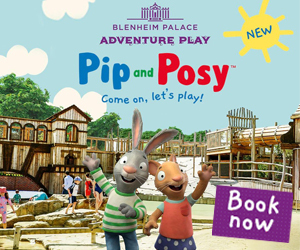Primary Times - the definitive what’s on and where to go family guide of activities and events for children of primary school age. Things to do with your kids during the school holidays including arts and craft activities, music and theatre for children, parties, competitions, days out, and family attractions along with term time drama schools, dance classes, after school clubs and sports activities. Things to do at a place near you!
Drawing and Talking helps teachers tackle children’s mental health issues
One in 10 children have a diagnosable mental health problem - according to a recent report by think tank, Centreforum - that’s the equivalent of three in every classroom and around 720,000 children across the country.
While these figures may not shock the thousands of teachers, learning mentors, nurses and counsellors, who help and nurture children daily, the startling statistics on access to treatment and waiting times will…
The research revealed that child and adolescent mental health services (CAMHS) are, on average, turning away nearly a quarter (23 per cent) of children referred to them for treatment by concerned parents, GPs, teachers and others. This is often because their condition is not considered serious enough due to high thresholds for treatment – one alarming example cited in the report was that of a service which would not accept those who had expressed a desire to commit suicide unless this had happened on more than one occasion.
The Centreforum research emerges against a myriad of concerns within the mental health sector about the lack of funding and early intervention services, including the Taskforce report for NHS England, which reported that worryingly, even for those children that do receive treatment, the average wait for routine appointments for psychological therapy was 32 weeks in 2015/16.
With just 0.7 per cent of NHS funding spent on young people’s mental health each year, these waiting times are somewhat less surprising.
The overall consensus is that a child's first meaningful involvement with mental health services is often not until their condition has already reached crisis point; by intervening early, crisis could be averted.
One of the organisations flying the flag for early intervention is Drawing and Talking, which provides low-cost training courses to adults, teaching them a short-term intervention therapy method for use with children who are on the waiting list for CAMHS or other external agencies, or for those who are beginning to show signs of anxious-avoidant insecure attachment.
To date the company has trained over 7,000 professionals and its technique is being implemented in over 5,000 schools across the UK.
Drawing and Talking was established in 2004 by Maria Beagley, a former Special Educational Needs Co-ordinator (SENCO), and her daughter, Catherine. The company hosts training days across the UK throughout the year, which teach an innovative and informed therapy method, equipping adults with tools they need to help children who have suffered trauma or who have underlying emotional difficulties that may be affecting their learning and behaviour.
Maria comments: “The method we use encourages each side of a child’s brain to work together to process difficult or painful memories by combining drawing, a right-brained activity, and talking, a left-brained activity.
“Painful memories, charged with high levels of emotion, are stored in visual form in the right brain and are expressed in symbolic form in the child’s drawings. Once on paper, they then become accessible to the logical left brain. Talking about the drawing allows an internal process to take place which enables the child to know that an experience is in the past and to file it away safely or even forget it.”
“Over time, the child becomes more able to process and manage their pain which will often lead to more positive behaviour and engagement with the national curriculum and other day-to-day learning processes.”
Part of the Drawing and Talking training process enables participants to identify children who may be able to benefit from the therapy method. Sometimes, a whole school can be affected by a loss or tragedy of some kind and often they do not have the resources to be able to deal quickly and effectively in these situations. Drawing and Talking’s therapy provides a school with an intervention that is a ‘proactive’ rather than ‘reactive’ technique to use with children.
Anyone working with traumatised children or those who have emotional and behavioural difficulties can use the Drawing and Talking technique. The technique is non-intrusive so proves to be very effective with children who may feel challenged by people in authority.
Catherine adds: “It is vital that children who suffer emotional trauma have access to the care and attention they need in order to secure their future health and education. Half of all mental health problems have been established by the age of 14, so early detection and intervention through schools and nurseries is paramount.
“Typically, children might have experienced bereavement of a grandparent, parent or sibling, bullying, their parent’s divorce, abuse or even unsettling things like moving house and starting a new school. With mental health services clearly not coping with demand, we need to get to the people that are best placed to affect a child’s future and equip them with tools which are easy to implement yet highly effective.”
Drawing and Talking’s roots stem from Dr John Allan’s Serial Drawing technique, which was used to train students at the University of British Columbia in their first year of an undergraduate degree. Maria was introduced to the non-intrusive therapy by British Child Psychotherapist, Michael Green, who then co-wrote the training program with Maria, developing Dr Allan’s technique for UK professionals.
Maria comments: “I was the SENCO at Garden Primary School in Merton when Michael carried out his original research project. In one day, Michael trained me and five teaching assistants to sit with a child while he or she draws and then to ask some non-intrusive questions about the drawing. The apprehension we had all felt during the training was quickly dissolved once we started to work with the children and the therapeutic benefits of the work began to emerge.
“In July 2004 Michael sadly died. Although I loved working with children, I realised that many more could benefit from this technique and I wanted put Michael’s vision in to practice – Michael wanted to empower people at a grass-roots level to deliver simple yet effective ways of helping children in distress. He envisaged Drawing and Talking being used in every school across the country, enabling children, who would otherwise go untreated, to access a mental health service in their own communities.”
“When Michael died I contacted Dr John Allan, who was delighted to hear that I wanted to carry on his work. John is a huge support and continues to provide us with information, encouragement and support – he travels to England each year for a conference in London (9th June, Imperial Hotel, Russel Square, London) for anyone interested in the Drawing and Talking method along with our trainees who gather to share work and experiences.”
Designed for teaching assistants (TAs), learning mentors, SENCOs, teachers or anyone who works with children.
The one-day training course enables a sensitive adult to facilitate 12, 30-minute weekly sessions to individual pupils, during which they draw and talk, the theoretical component to the training teaches basic neurobiological theory relating to trauma, how to create a safe and containing space, the importance of endings and losses and how to deal with distress and child protection issues.
During the practical element, participants experience drawing in the presence of another person and how to stay in the world of the drawing when asking questions. At the end of the training, participants are given a manual and are equipped to go back to their schools or clinics and implement the technique.
Understandably, concerns are raised as to how safe the technique is – is someone who has trained for one day equipped to provide the level of care available from a counsellor or therapist, who has undergone years of training?
However, the Drawing and Talking technique is designed to let a child process his or her feelings internally, in a safe environment and at their own pace, as Maria explains:
“Children rarely, if ever, become distressed during a Drawing and Talking session and it is unlikely that they will make any sort of disclosure. If they do or, if the adult working with the child is particularly concerned, then the usual child protection rules apply.
“Our training does not teach people to examine and interpret an image a child has drawn to find its meaning, participants are taught to stay in touch with the internal process happening within the child while they are drawing, by asking non-intrusive questions.
“With a pencil and paper to hand, a child’s basic instinct is to draw, and by talking through this with an empathetic and caring adult, a child is able to process and make sense of the painful memories that may be effecting their behaviour, and in turn their learning.”
Case study
Samuel* (10), had recently moved back to England after four years of living abroad. Despite attending the same primary school that he had attended before he moved, Samuel was finding it difficult to settle and to make new friends, and his unhappiness began to affect his behaviour and learning potential.
Maria began a 12-week programme of Drawing and Talking with Samuel, which began with him drawing a series of negative images, “First he drew a picture entitled Evil Witch - not surprising as it was October and nearing Halloween - followed by Party Party depicting smoking, drinking, gambling and a glamorous-looking woman with painted nails and killer heels.
“After four weeks of Drawing and Talking therapy, Samuel drew a super-hero which he named Justin and used three sheets of paper before he was happy with it before finally titling the picture Power Force. Continuing his program, Maria and Samuel worked through The Danger Wolf, The Robin Hood Band and Homer’s Embarrassment and in week eight, Samuel drew a bird which he named Lulu. When I asked him to tell me about the bird, he said, ‘It’s the bird that’s been in all my pictures’.
“I looked back at Samuel’s previous pictures and realised that the bird was there right from the beginning, I just hadn’t seen it! I had been so caught up in what was happening in the I failed to notice - but Samuel felt safe and was prepared to let me know.
“From then on, Lulu was prevalent; gathering the troops for a battle with the eagles before finally fighting off the Evil Witch we had seen in the first picture.
“In his last picture, which Samuel entitled Lulu’s new home, he drew a thought bubble, coming out of Lulu’s head, which read, ‘I’m going to have a good life’ and that’s when I knew that Samuel had been able to work through the internal conflict to a hopeful resolution.”
For more information on Drawing and Talking training and available course dates, call 020 8715 0745 or visit drawingandtalking.com.
*Samuel’s name has been changed for confidentiality




